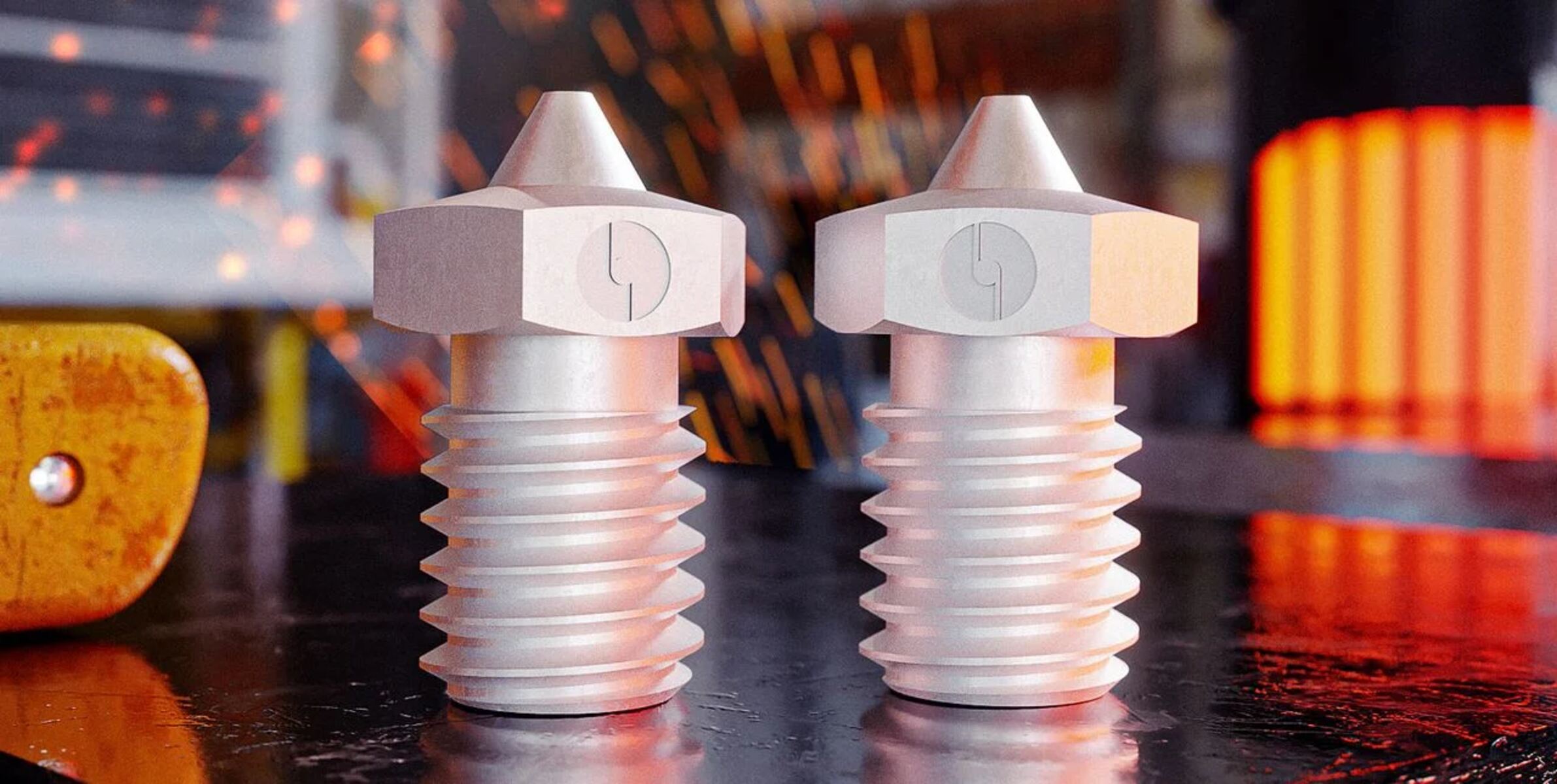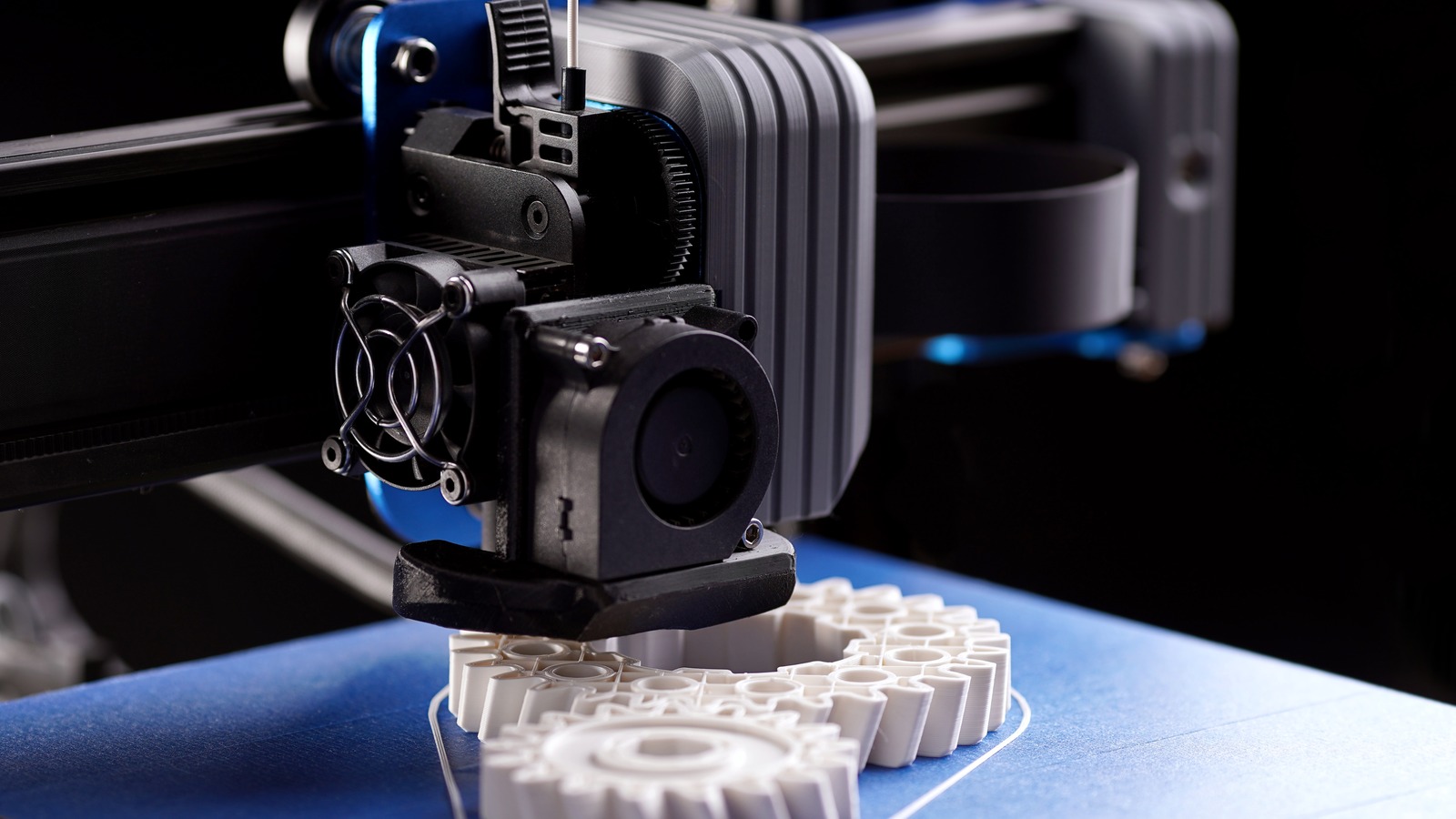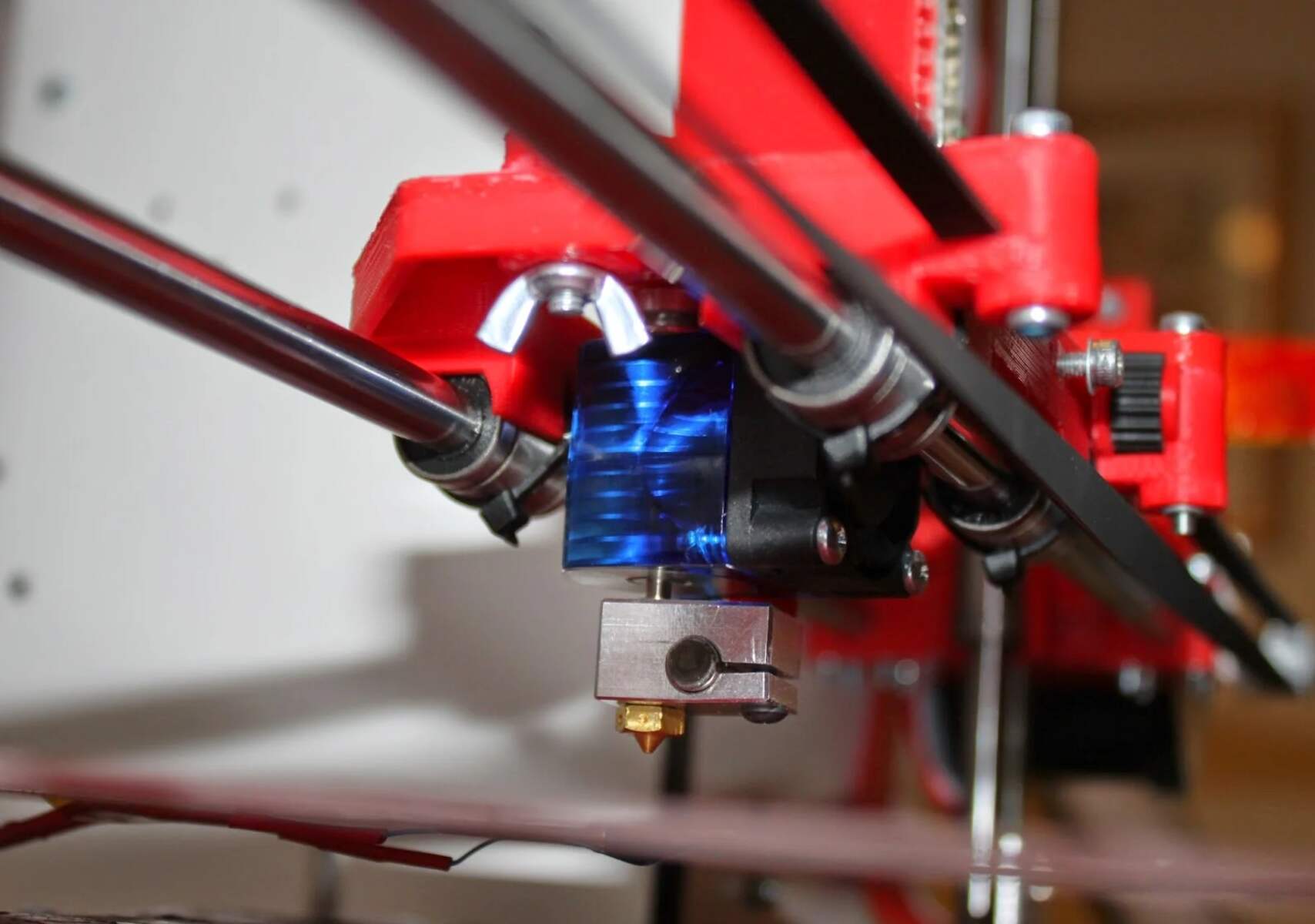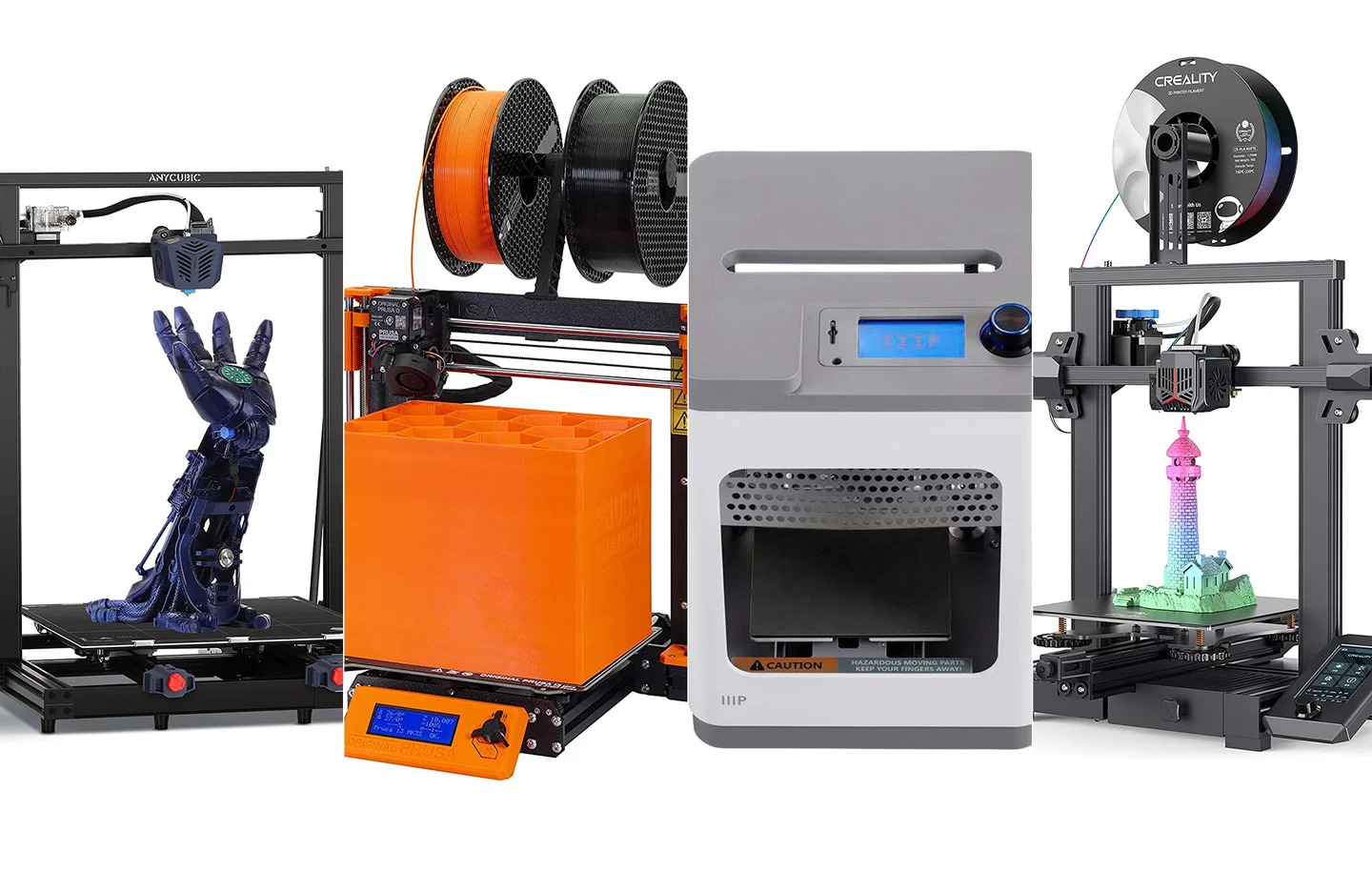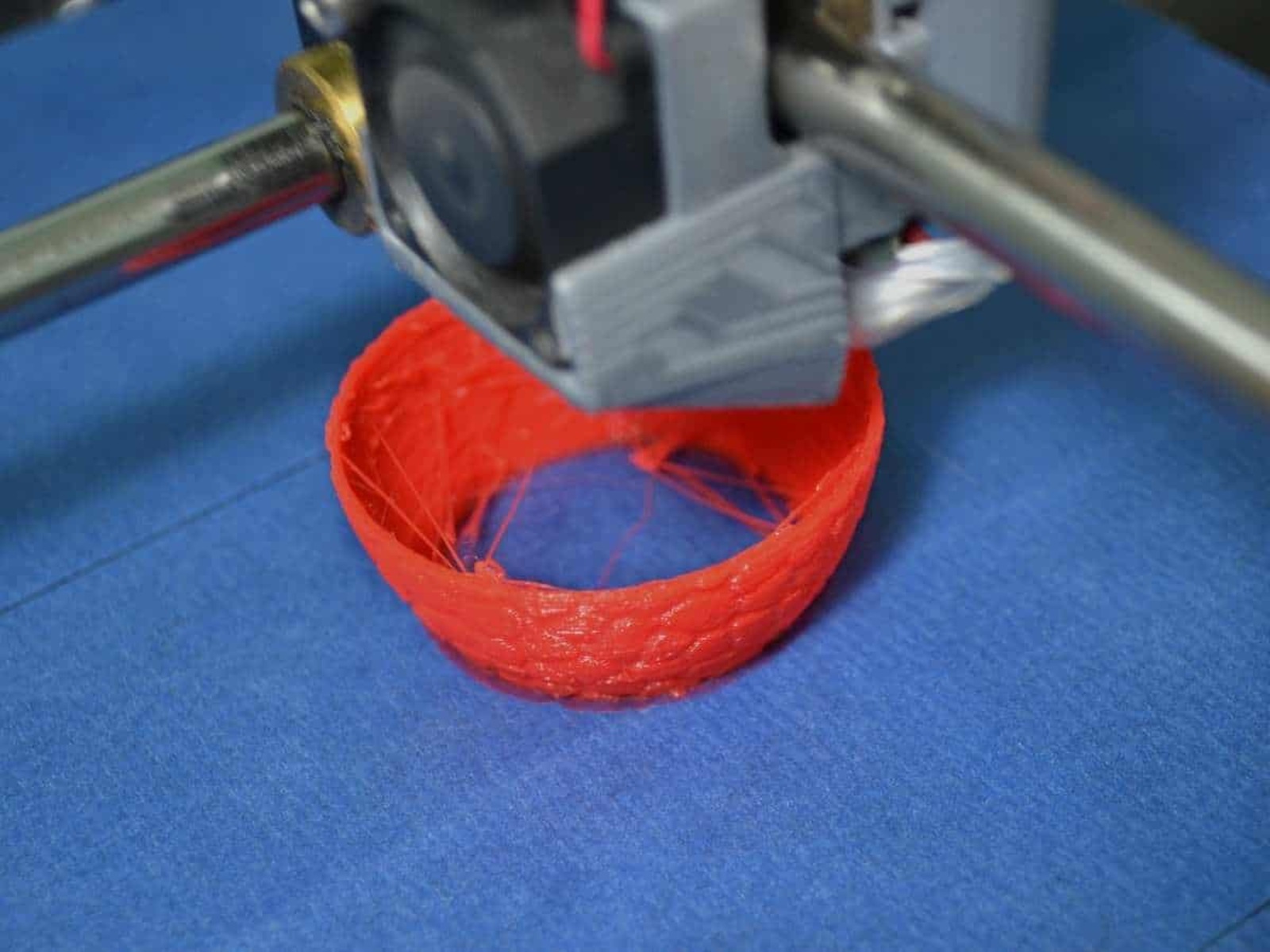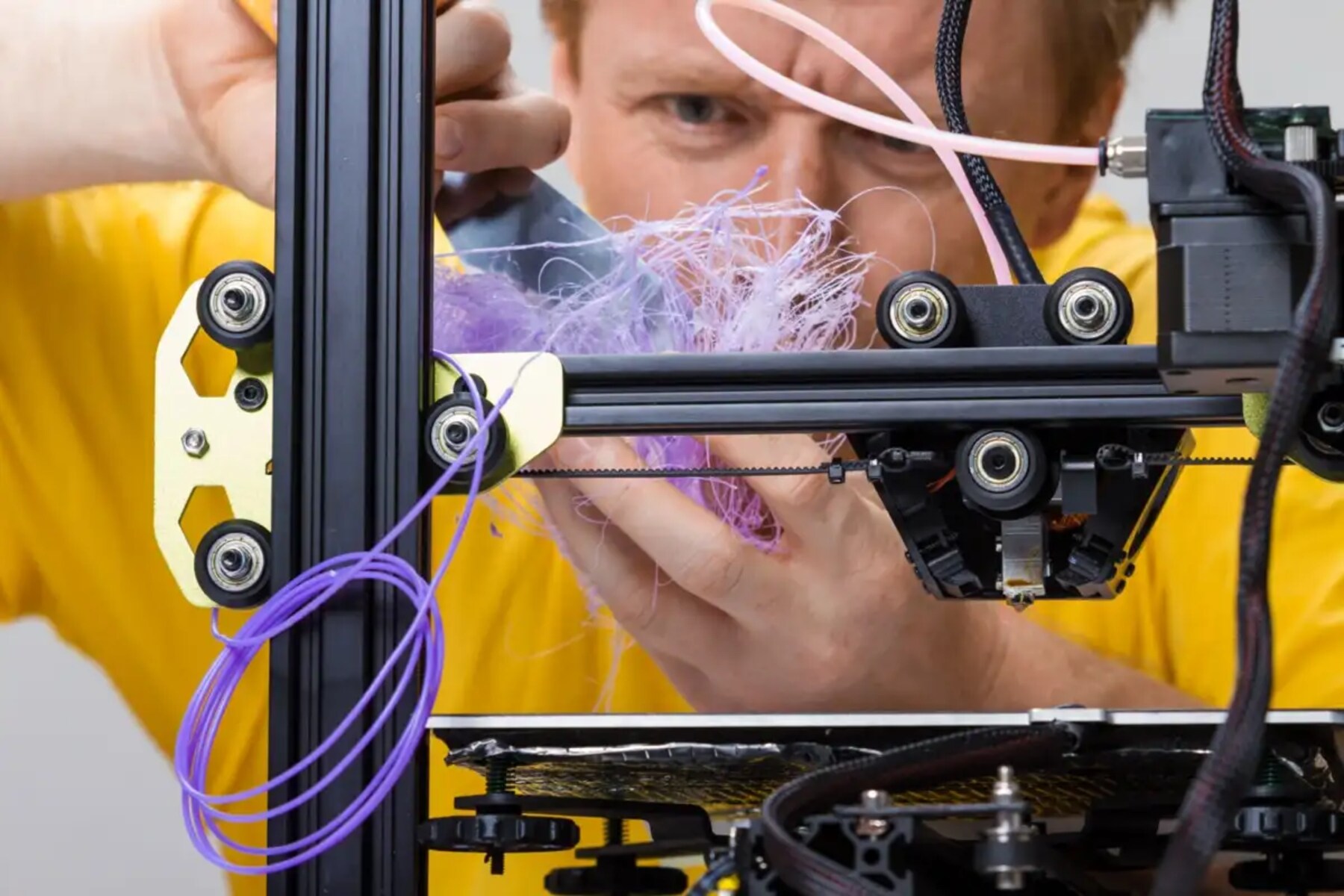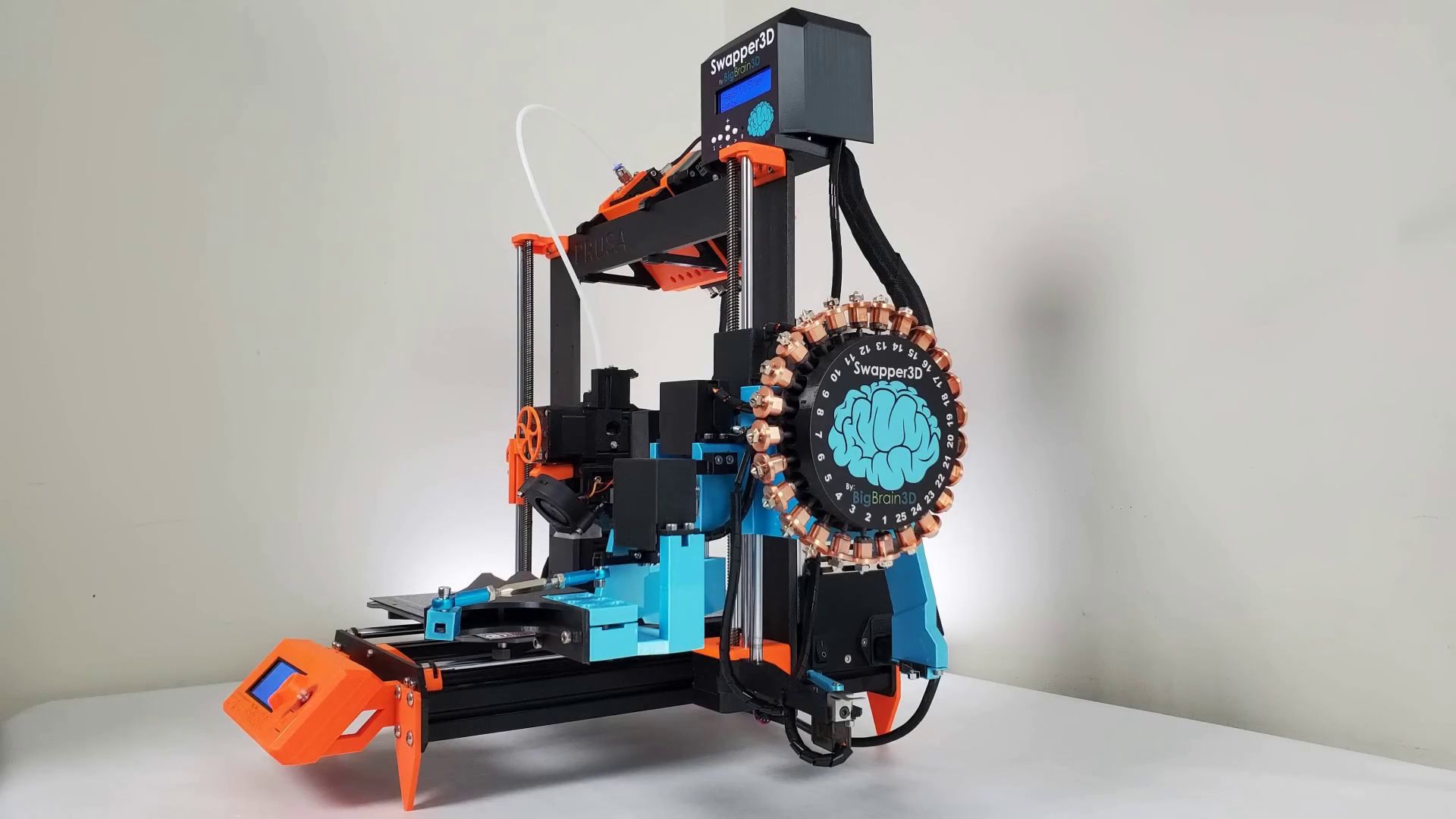Introduction
When it comes to 3D printing, achieving the perfect print quality is a top priority for enthusiasts and professionals alike. While factors like filament type and print settings play a significant role in the outcome of a 3D print, one often overlooked element is the nozzle temperature.
The nozzle temperature refers to the heat at which the extruder nozzle of a 3D printer operates. It plays a crucial role in the print process, as it directly affects the melting and flow of the filament material. Finding the right nozzle temperature is essential for ensuring optimal print quality and successful prints.
Understanding the importance of nozzle temperature and how it affects your 3D prints is key to producing high-quality, reliable results. In this article, we will delve into the factors affecting nozzle temperature, how to determine the optimal temperature for different filament types, and the potential issues caused by incorrect temperature settings.
Whether you are a beginner or an experienced 3D printer user, this guide will provide valuable insights into the intricacies of nozzle temperature and help you improve your 3D printing skills.
What is the Nozzle Temperature?
The nozzle temperature refers to the heat at which the extruder nozzle of a 3D printer operates. It determines the temperature at which the filament material is melted and extruded onto the print bed or previous layers of the print.
The nozzle temperature is a crucial parameter in the 3D printing process, as it directly affects the flow and consistency of the molten filament. Different filaments require specific nozzle temperatures to achieve optimal printing conditions. Failure to set the correct nozzle temperature can result in issues such as poor layer adhesion, stringing, or even clogged nozzles.
The nozzle temperature is controlled by the 3D printer’s firmware or slicing software, allowing users to adjust it based on the filament type and desired print quality. Most 3D printers offer a wide temperature range for the nozzle, typically between 180°C and 260°C.
It is important to note that the nozzle temperature does not refer to the build chamber or print bed temperatures, which are separate parameters that affect the overall print process. The nozzle temperature specifically focuses on melting the filament material as it passes through the extruder to the nozzle’s opening.
To ensure successful 3D prints, it is crucial to understand the nozzle temperature requirements of the filament you are using as well as how to determine the optimal temperature for different printing scenarios. By maintaining the correct nozzle temperature, you can achieve precise and high-quality prints with minimal defects.
Why is the Nozzle Temperature Important?
The nozzle temperature is a crucial factor in 3D printing, as it directly impacts the overall print quality and the success of your prints. Understanding the importance of nozzle temperature can help you achieve better control over your 3D printing process.
Here are a few reasons why the nozzle temperature is so important:
- Melting and Extrusion: The nozzle temperature determines the temperature at which the filament material melts and extrudes from the nozzle. Different materials have varying melting points, so setting the appropriate temperature ensures proper flow and deposition of the filament material.
- Layer Adhesion: The nozzle temperature also plays a vital role in ensuring strong layer adhesion. If the temperature is too low, the layers may not bond properly, resulting in weak or flimsy prints. On the other hand, if the temperature is too high, the layers may overheat, leading to warping or distortion. Finding the right balance is crucial for achieving strong and well-bonded layers.
- Filament Compatibility: Different filament materials have specific temperature requirements for optimal printing. The nozzle temperature needs to be set accordingly to ensure proper melting and flow of the specific filament being used. Some filaments, like PLA, require lower temperatures, while others, like ABS, require higher temperatures to achieve optimal print results.
- Print Speed and Detail: The nozzle temperature can affect the speed and level of detail achievable in a print. Higher temperatures allow for faster extrusion and can be beneficial for large-scale prints or quick prototypes. Lower temperatures, on the other hand, can help achieve finer details and sharper lines. Understanding the trade-off between speed and detail is essential for optimizing your nozzle temperature settings.
- Preventing Clogs and Jams: Incorrect nozzle temperature settings can lead to filament clogs or jams within the extruder or nozzle. If the temperature is too low, the filament may not flow smoothly, causing blockages. Conversely, if the temperature is too high, the filament can become too fluid, resulting in oozing and potential nozzle clogs. By setting the correct temperature, you can minimize the risk of such issues.
By recognizing the impact of nozzle temperature on print quality, layer adhesion, filament compatibility, print speed, and extruder performance, you can make informed decisions when setting the temperature for your 3D prints. Understanding how nozzle temperature influences these aspects allows you to fine-tune your settings and achieve the best results for your specific printing requirements.
Factors to Consider When Determining the Nozzle Temperature
Choosing the right nozzle temperature for your 3D prints involves considering several important factors. By taking these factors into account, you can ensure optimal print quality and minimize the risk of issues such as poor adhesion, stringing, or clogs. Here are some factors to consider when determining the nozzle temperature:
- Filament Type: Different filament materials have specific temperature requirements for optimal printing. PLA, for example, typically requires a nozzle temperature between 180°C and 220°C, while ABS may need a higher temperature range of 230°C to 260°C. Consult the manufacturer’s guidelines or filament specifications to determine the recommended temperature range for the filament you are using.
- Print Speed: The print speed can impact the nozzle temperature. Faster print speeds may necessitate higher temperatures to ensure proper filament flow and adhesion, while slower speeds might require lower temperatures to prevent overheating or oozing. Experimenting with different temperatures at varying print speeds can help you find the optimal combination for your specific print requirements.
- Layer Height: The layer height chosen for a print can influence the nozzle temperature. Smaller layer heights often require lower temperatures to maintain precise details, while larger layer heights may benefit from slightly higher temperatures for better interlayer adhesion. Adjusting the temperature based on the chosen layer height can significantly impact the print outcome.
- Build Plate Temperature: The temperature of the build plate or print bed can also influence the nozzle temperature. A heated bed can help with print adhesion and prevent warping, allowing for lower nozzle temperatures. Conversely, with an unheated bed, increasing the nozzle temperature might be necessary to promote proper filament adhesion. Take into account the build plate temperature requirements, if applicable, when determining the nozzle temperature.
- Environment: The ambient temperature and humidity in the printing environment can affect nozzle temperature. If the surroundings are cold, it may be necessary to increase the nozzle temperature slightly to compensate. Conversely, in a warm environment, reducing the temperature slightly might be required to avoid filament softening or stringing. Be mindful of the printing environment and make adjustments accordingly.
Keep in mind that these factors are interconnected, and finding the right balance among them is crucial. It is recommended to start with the manufacturer’s recommended temperature ranges for your filament and make adjustments based on the specific requirements of your prints. Experimentation and iterative adjustments are essential to fine-tune the nozzle temperature and optimize the overall printing process.
Types of Filament and Their Recommended Nozzle Temperature Ranges
Each filament type has its own characteristics and requirements, including the optimal nozzle temperature range. Understanding the recommended temperature ranges for different filaments can help you achieve the best results in your 3D prints. Here are some common filament types and their corresponding nozzle temperature ranges:
- PLA: PLA (Polylactic Acid) is one of the most popular and widely used filaments in 3D printing. It generally has a recommended nozzle temperature range of 180°C to 220°C. PLA is known for its ease of use, low warping tendency, and minimal odor. It can produce high-quality prints at lower temperatures and is suitable for a wide range of applications.
- ABS: ABS (Acrylonitrile Butadiene Styrene) is another commonly used filament known for its durability and heat resistance. It typically requires a higher nozzle temperature range of 230°C to 260°C. ABS prints can be more challenging due to its tendency to warp and emit fumes during printing. However, with the proper nozzle temperature and print settings, ABS can yield strong and functional prints.
- PETG: PETG (Polyethylene Terephthalate Glycol) is a versatile filament that combines the ease of printing of PLA with the durability of ABS. Its recommended nozzle temperature range is usually between 220°C and 250°C. PETG prints typically exhibit good strength and impact resistance while being less prone to warping compared to ABS. It is often chosen for functional prototypes and mechanical parts.
- TPE/TPU: TPE (Thermoplastic Elastomer) or TPU (Thermoplastic Polyurethane) filaments are flexible materials that provide elasticity and flexibility. The recommended nozzle temperature ranges for TPE/TPU are typically between 200°C and 230°C. These filaments require specific print settings, including slower print speeds and proper cooling techniques, to achieve successful prints without issues such as stringing or oozing.
- Nylon: Nylon is a versatile filament known for its strength and durability. It generally requires a nozzle temperature range of 240°C to 260°C. Nylon is hygroscopic, meaning it absorbs moisture from the air, which can affect print quality. Conditioning the filament before printing and using a higher nozzle temperature can help mitigate moisture-related issues and ensure better print results.
- Specialty Filaments: There are various specialty filaments available on the market, such as wood-filled, metal-filled, carbon fiber, and conductive filaments, each with its own unique properties and temperature requirements. It is essential to consult the manufacturer’s guidelines or filament specifications for the recommended nozzle temperature range for these specialty filaments.
It is important to note that these are general temperature guidelines, and there can be variations between different filament brands or specific formulations. Always refer to the manufacturer’s recommendations and perform test prints to determine the optimal temperature within the recommended range for your specific filament.
By understanding the recommended nozzle temperature ranges for different filament types, you can ensure proper melting, flow, and adhesion of the filament material, resulting in high-quality and successful 3D prints.
How to Find the Optimal Nozzle Temperature for Your Filament
Finding the optimal nozzle temperature for your filament is essential for achieving the best print quality and avoiding issues such as poor adhesion, stringing, or clogged nozzles. While manufacturers typically provide recommended temperature ranges, finding the ideal temperature within that range may require some experimentation. Here are some steps to help you determine the optimal nozzle temperature for your filament:
- Start with the Manufacturer’s Recommendations: Consult the filament manufacturer’s guidelines or specifications to identify the recommended temperature range for the filament you are using. This gives you a good starting point and ensures that you are in the ballpark of the optimal temperature.
- Perform Calibration Prints: Calibration prints are small test models specifically designed to evaluate different aspects of print quality. Print a calibration model using the manufacturer’s recommended temperature as a baseline. Assess the print quality, examining factors like layer adhesion, stringing, and surface finish.
- Adjust the Temperature Incrementally: If the calibration print exhibits issues, such as poor layer adhesion or stringing, make incremental adjustments to the nozzle temperature. Increase or decrease the temperature by increments of 5°C and reprint the calibration model. Carefully observe the changes in print quality with each adjustment.
- Observe and Compare Results: Evaluate the calibration prints produced at different nozzle temperatures. Look for improvements in layer adhesion, stringing reduction, and overall print quality. Find the temperature range that yields the best results, both visually and structurally.
- Consider Filament-Specific Factors: Some filaments may require specific temperature adjustments due to their unique characteristics. For example, PLA may benefit from a slightly lower temperature to reduce stringing, while ABS may require a higher temperature for better adhesion. Take into account filament-specific considerations when determining the optimal nozzle temperature.
- Test Print Variations: Once you have found a temperature range that produces satisfactory results, expand your testing by printing different models and shapes. This step allows you to assess the temperature’s impact on various print characteristics, such as bridging, overhangs, and small details.
- Maintain Consistency: Once you have determined the optimal nozzle temperature for a specific filament, remember to maintain that temperature setting consistently for future prints using the same filament. Consistency in temperature helps ensure consistent results and reduces the need for re-calibration.
Remember that finding the optimal nozzle temperature may require multiple iterations and adjustments. It is an iterative process that involves careful observation and assessment of print quality. By following these steps and dedicating time to experimentation and refinement, you can discover the ideal nozzle temperature for your filament and achieve the best possible print outcomes.
The Effects of Nozzle Temperature on Print Quality
The nozzle temperature significantly impacts the overall print quality in 3D printing. Finding the right temperature for your filament and print settings is crucial to achieving precise and high-quality prints. Let’s explore the effects of nozzle temperature on print quality:
- Layer Adhesion: The nozzle temperature plays a crucial role in ensuring strong layer adhesion. If the temperature is too low, the layers may not bond properly, resulting in weak and brittle prints. On the other hand, if the temperature is too high, the layers may overheat, causing warping or distortion. Finding the optimal temperature helps achieve well-bonded and solid layers.
- Detail and Accuracy: Nozzle temperature affects the level of detail and accuracy in a print. Higher temperatures enable faster extrusion, which can compromise fine details. Lower temperatures, within the filament’s melting range, allow for better control and finer details. Balancing the temperature with the desired level of detail is key to achieving precise prints.
- Stringing and Oozing: Stringing and oozing occur when the filament material continues to flow after the nozzle has moved to a new location. The nozzle temperature directly influences the material’s viscosity and flow behavior. Higher temperatures increase the risk of stringing, while lower temperatures reduce the likelihood. Optimizing the nozzle temperature can minimize stringing and oozing, resulting in cleaner and more polished prints.
- Print Speed: The nozzle temperature impacts the print speed that can be achieved without compromising print quality. Higher temperatures allow for faster extrusion rates, which can be advantageous for large-scale prints or rapid prototyping. Lower temperatures are often necessary for maintaining print quality when dealing with intricate designs or small features. Balancing speed and temperature helps optimize the printing process.
- Overhangs and Bridging: Nozzle temperature affects the performance of overhangs and bridging. Higher temperatures increase filament flow, which can lead to drooping or sagging in overhangs. Lower temperatures help maintain better shape and stability for overhangs. Similarly, higher temperatures assist in bridging, enabling smoother and more successful bridging sections in prints.
- Warping and Shrinkage: Warping and shrinkage are common issues in 3D printing. Nozzle temperature plays a role in mitigating these issues, particularly with materials such as ABS. Higher temperatures help improve layer adherence and minimize warping, while proper cooling and lower temperatures can reduce shrinkage and improve print stability. Finding the right temperature balance is crucial to minimizing these print defects.
Understanding the effects of nozzle temperature on print quality allows you to optimize your settings and achieve the desired print results. Fine-tuning the temperature based on the filament type, print speed, and specific design requirements will help you produce high-quality prints with accurate details, minimal defects, and excellent dimensional accuracy.
Common Issues Caused by Incorrect Nozzle Temperature
Selecting the incorrect nozzle temperature can result in various issues that negatively impact the quality and success of your 3D prints. Understanding these common issues can help you identify and rectify temperature-related problems. Here are some of the most common issues caused by incorrect nozzle temperature:
- Poor Layer Adhesion: If the nozzle temperature is too low, the layers may not bond properly, leading to weak or delaminated prints. Insufficient layer adhesion compromises the overall strength and durability of the printed object.
- Stringing and Oozing: When the nozzle temperature is too high, the filament can become overly fluid, resulting in stringing and oozing. Excessive stringing leaves unwanted filament trails between different parts of the print, while oozing causes droplets or blobs of filament in unintended areas.
- Warping and Curling: Incorrect nozzle temperature can contribute to warping and curling of the printed object, particularly when using materials like ABS. Higher temperatures increase the likelihood of warping, leading to warped or distorted prints that do not adhere properly to the print bed.
- Surface Artifacts: Incorrect nozzle temperature can cause surface artifacts on the printed object. If the temperature is too high, the filament may start to liquefy excessively, resulting in a rough or bubbly surface finish. Conversely, if the temperature is too low, the filament may not melt sufficiently, leading to a rough texture or visible layer lines.
- Under-Extrusion or Over-Extrusion: The nozzle temperature also affects the extrusion rate of the filament. If the temperature is too low, the filament may not flow smoothly through the nozzle, resulting in under-extrusion and incomplete or weak prints. Conversely, too high a temperature can lead to over-extrusion, causing excess filament material and uneven prints.
- Poor Print Quality: Incorrect nozzle temperature often results in poor overall print quality. Prints may lack fine details, exhibit inconsistent layer adhesion, or have visible defects such as stringing, oozing, or warping. Achieving the correct temperature is crucial for obtaining the desired print quality and avoiding unnecessary flaws.
By recognizing these common issues caused by incorrect nozzle temperature, you can troubleshoot and make the necessary adjustments to improve print quality. It is crucial to fine-tune the nozzle temperature according to the specific filament requirements, print settings, and environmental conditions to achieve optimal results.
Troubleshooting Tips for Nozzle Temperature-Related Problems
Nozzle temperature-related problems can hinder the quality and success of your 3D prints. Fortunately, there are several troubleshooting tips you can follow to resolve these issues. Here are some helpful tips for dealing with nozzle temperature-related problems:
- Poor Layer Adhesion: If you are experiencing poor layer adhesion, try increasing the nozzle temperature slightly to ensure better melting and bonding between layers. Additionally, make sure your print bed is properly leveled and the nozzle is at the correct distance from the bed to promote good adhesion.
- Stringing and Oozing: To minimize stringing and oozing, lower the nozzle temperature. Reducing the temperature can help the filament flow less freely, reducing the chance of stringing during non-print moves. Adjusting the retraction settings in your slicing software can also help minimize stringing by pulling the filament back between moves.
- Warping and Curling: If you are experiencing warping or curling, try increasing the nozzle temperature or using a heated build plate. A higher temperature can minimize the temperature differential between the layers, reducing the chances of warping or curling. Using a build plate temperature that matches the filament’s recommended range can also help promote better adhesion.
- Surface Artifacts: To improve surface finish, consider adjusting the nozzle temperature within the filament’s recommended range. Lowering the temperature can help reduce the occurrence of rough or bubbly surfaces, while increasing the temperature slightly may lead to smoother finishes. Fine-tuning the printing speed and cooling settings can also help improve surface quality.
- Under-Extrusion or Over-Extrusion: To address under-extrusion, check if your nozzle is clean and unclogged. Increasing the nozzle temperature slightly can also help improve the flow of the filament. If you are experiencing over-extrusion, ensure you are not overloading the extruder with excessive filament and consider lowering the nozzle temperature to reduce the overall flow rate.
- Poor Print Quality: If overall print quality is compromised, start by adjusting the nozzle temperature based on the specific filament’s recommendations. Additionally, double-check other print settings such as print speed, retraction settings, and cooling fans. Iterative testing and making incremental changes to nozzle temperature and printing parameters can help you achieve the desired print quality.
It is important to note that troubleshooting nozzle temperature-related problems may require a combination of adjustments to several factors, including the nozzle temperature, print settings, and hardware setup. Experimentation, careful observation, and iteration are key to finding the optimal settings for your specific printing needs.
Remember to document any changes you make and their impact on print quality. This way, you can track your progress and refer back to successful adjustments in future prints. By utilizing these troubleshooting tips and being patient, you can overcome nozzle temperature-related problems and enhance the overall print quality of your 3D prints.
Conclusion
Nozzle temperature is a critical factor in achieving high-quality and successful 3D prints. Understanding the importance of nozzle temperature, considering various factors when determining the temperature, and knowing the effects of temperature on print quality are all essential for optimizing your printing process.
By starting with the manufacturer’s recommendations, performing calibration prints, and making incremental adjustments, you can find the optimal nozzle temperature for your filament. This allows you to achieve strong layer adhesion, precise details, and minimize issues such as stringing, warping, and surface artifacts.
Common issues caused by incorrect nozzle temperature, such as poor layer adhesion, stringing, and warping, can be resolved through troubleshooting techniques. By adjusting the temperature, retraction settings, print speed, and other print parameters, you can overcome these challenges and improve your overall print quality.
Remember that finding the optimal nozzle temperature is an iterative process that requires experimentation and observation. Fine-tuning the temperature based on filament type, print settings, and environmental conditions will help you achieve the best possible results.
Through a combination of understanding filament properties, careful calibration, and troubleshooting, you can optimize your nozzle temperature settings and achieve the highest quality prints in your 3D printing journey.







